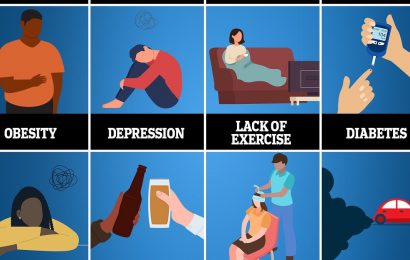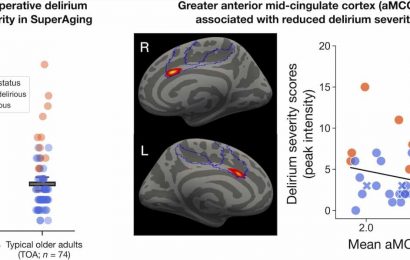
As patients with confirmed cases of COVID-19 first began arriving at Johns Hopkins Hospital in Baltimore in March, cardiologist David Kass heard surprising observations from his colleagues in the ICU. First, the patients were younger than expected, in light of reports from China and Italy that the virus mostly endangered the elderly. Second, many of the patients in Baltimore were obese.
“Even based on about 20 patients at first, the finding was already significant,” says Kass, a professor of medicine who leads the Institute of CardioScience within the Johns Hopkins School of Medicine. “But at the time you could do a Google search of ‘COVID-19 and obesity’ and you got basically nothing.”
In the weeks since, a number of studies and anecdotal reports have pointed to obesity being a notable risk factor for COVID-19—and often the primary risk factor for younger patients. This month, Kass and two Hopkins colleagues gathered preliminary findings from six ICU units around the United States, concluding in a Lancet report that “in populations with a high prevalence of obesity, COVID-19 will affect younger populations more than previously reported.”
This risk is particularly relevant in the U.S. because the prevalence of obesity is around 40%, compared to a prevalence of about 6% in China and 20% in Italy.
The Hub recently spoke with Kass for more insight on why obesity is associated with more severe outcomes and how that should change our thinking about the best ways to stay safe.
What are you and other experts seeing with the early data?
After the initial observations at Hopkins, we had enough data to see a significant correlation between having a higher BMI (Body Mass Index) and a younger age in the COVID-19 patients requiring intensive care. So I emailed about 35 cardiology friends of mine across the country who helped connect us to ICU physicians in a diverse areas spanning from Washington state to New York City and Florida. We ended up with data from six hospitals related to about 260 patients, and they all followed the same relationship we’d first seen at Johns Hopkins.
While this study for The Lancet was in process, the topic of obesity started gaining more attention. A New York Times editorial by two physicians pointed to the problem, and obesity was noted as a potential factor with the eruption of severe cases in New Orleans. So there was this moment of, “Hey, wait a minute, America. You may think you don’t have pre-existing risk factors for COVID-19, but guess what? Here’s one we haven’t been talking about.”
What is the significance of this for younger patients?
Our data show that if you are younger and you end up in the hospital with COVID-19, it is more likely that you are obese. The younger patients are less likely to have other major co-morbidities such as hypertension, heart disease, and even diabetes—so obesity can be the primary factor that impacts their COVID-19 course. Studies have now shown obesity increases the likelihood that you’ll end up in a hospital or an ICU, and that your disease course can be more severe.
The reason the co-morbidities aren’t showing up in younger patients—let’s say under 40 or 50 years old—is that the cardiac, vascular, and metabolic risks linked to obesity may not have had enough time to develop in a concrete way. You’ll find that COVID-19 patients who are younger are unlikely to have heart disease or a prior stroke, and many are not yet diabetic. So we need to be paying attention to obesity as a major risk on its own.
What factors might explain why the COVID-19 risks are higher with obesity?
One is based on physics. People with substantial obesity—say a BMI over 35—are carrying a lot of excess weight mostly in their abdomen, below the diaphragm. You move your diaphragm toward your feet every time you breathe, and if you have an extra 80 pounds or more to move, that makes breathing harder. This would be true, really, for any respiratory disease. With COVID-19, we’re also seeing that the membranes separating the lung airway sacs and blood vessels surrounding them become leaky, allowing fluid to enter the airways. This makes it hard to get oxygen from the air to the blood, so the diaphragm has to work even more—and obesity restricts this.
Inflammation is another factor. Fat itself is metabolically active, and it produces a fair number of pro-inflammatory molecules called cytokines, which are a type of immune protein. It’s as if your body is kind of battling itself continuously—a little war caused by signals released from fat cells which the immune system responds to, producing a low level of background inflammation. So if you are obese, this is the baseline. Now you superimpose a bigger battle with a novel virus that the immune system has not seen before, and it becomes hyper-activated. That’s not going a good combination.
Another area that I believe deserves more study is the role of the ACE2 protein in fat cells. This protein is key for the COVID-19 virus, since the virus must bind to it in order to gain entry into a cell. It turns out fat cells express ACE2 at fairly high levels, and there are some past data on this idea related to other respiratory viruses that they can attack fat, last in fat, and shed more slowly from fat. This could make an obese individual more infectious even as their symptoms get better.
Experts believe the U.S. needs to be particularly concerned with the obesity issue because of the high rates here. But within the U.S., the risks are uneven, correct?
It’s true that our overall obesity rates are much higher than for example China, which is around 6%. Within the U.S., there are regions with lower obesity rates that fall in the upper teens, similar to those in Europe. Then we also have many states where the obesity rate is 40% or higher.
I actually recently created a spreadsheet based on data easily obtained online to investigate this question—whether there is a positive correlation between obesity percentage in a given state and the number of positive COVID-19 cases. To do this, I first normalized the number of cases in each state to their testing rates, since obviously cases don’t show up if you don’t test. I also factored in the state’s population density. My spreadsheet shows that the biggest factor for COVID-19 cases between states is population density, and that’s not really surprising. But there remains a significant contribution from BMI and the number of cases. So this is something we need to study more.
What do you think the message is for people who are currently obese, in their understanding of COVID-19?
I think the message is that you need to treat obesity seriously as a pre-existing condition that increases your risks for COVID-19. Maybe you didn’t consider that because you’re young, and thought of this as an old person thing. But no—if you’re obese and you’re 25, or 35, or 45, you have a risk factor and you should be appropriately careful.
If you’re in a state that decided to open up commercial establishments like bars and restaurants, and you might normally go to these places, think twice; or at a minimum, take the precautions of wearing a mask and social distancing. These precautions have been voluntary around the country, and we’re seeing large variability in how people follow these recommendations—even to the point of it becoming a political statement. That’s unfortunate, since the virus does not care about politics. If you’re substantially obese, this is the time to be prudent: wear the mask, keep a distance from others, and contact your doctor sooner than you might otherwise if you feel sick. This is your life.
What about from the physician’s standpoint?
Source: Read Full Article


